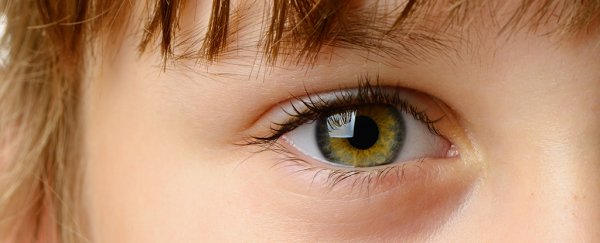Two separate groups of researchers have uncovered similar techniques for figuring out whether children have autism that's quick, cheap, easy, and highly accurate: tracking the way their eyes move using a webcam and software. The new procedures could ultimately lead to an earlier and more accurate diagnosis for affected patients.
Until now, children with autism spectrum disorder ( ASD) have been identified using parental reports, clinical observations and interviews with the children themselves. If the newly published techniques proves to be sound, it gives doctors alternative ways of detecting ASD that are less subjective, effective at an earlier stage, and also useful in measuring the severity of the autism.
First up is the team from the Cleveland Clinic in Ohio. As Gizmag reports, the researchers were able to correctly identify autism in 80 percent of their subjects (children aged between three and eight). In this case, these were children who had already been referred as being at high risk of having the condition.
The tests analysed how long they spent focussing on the social and non-social aspects of a series of images and videos.
"Identifying children with autism early is critical to getting them appropriate interventions that will make their lives better," said Thomas Frazier, who lead the research team.
"The lack of objective methods for identifying children with autism can be a major impediment to early diagnosis… Our study shows that [eye tracking] has excellent potential to enhance identification and, because it is objective, may increase parents' acceptance of the diagnosis, allowing their children to get treatment faster."
Meanwhile, researchers at the University of Vermont have found that kids with ASD spend more time looking at the mouths of the people they're talking to when the conversation topics turn more emotional.
The team was able to spot the trend using existing tools - a Mirametrix S2 Eye Tracker system and Skype - and it could help speech therapists treat those with ASD in the future.
"We were amazed that no one had done this yet," said one of the team, Tiffany Hutchins. "We found only two other studies that used eye tracking to look at social attention during actual conversations with other people, but none with autism. I think the implications are that you can do a lot with this technology."
Hutchins says conversation topics really matter to children with ASD: she thinks that dealing with emotional subjects might tax the executive functions of the brain and place a high demand on working memory, which is why children affected with autism start looking for "more accessible information" direct from the mouth.
The tests carried out so far in Cleveland and Vermont have been on a relatively small groups of children (under 50 in each case), and both teams are now hoping to expand their research to larger sample sizes in the near future to see if the initial results can be duplicated.
The first study has been published in the Journal of the American Academy of Child and Adolescent Psychiatry, and the second has been published in Research in Autism Spectrum Disorders.
